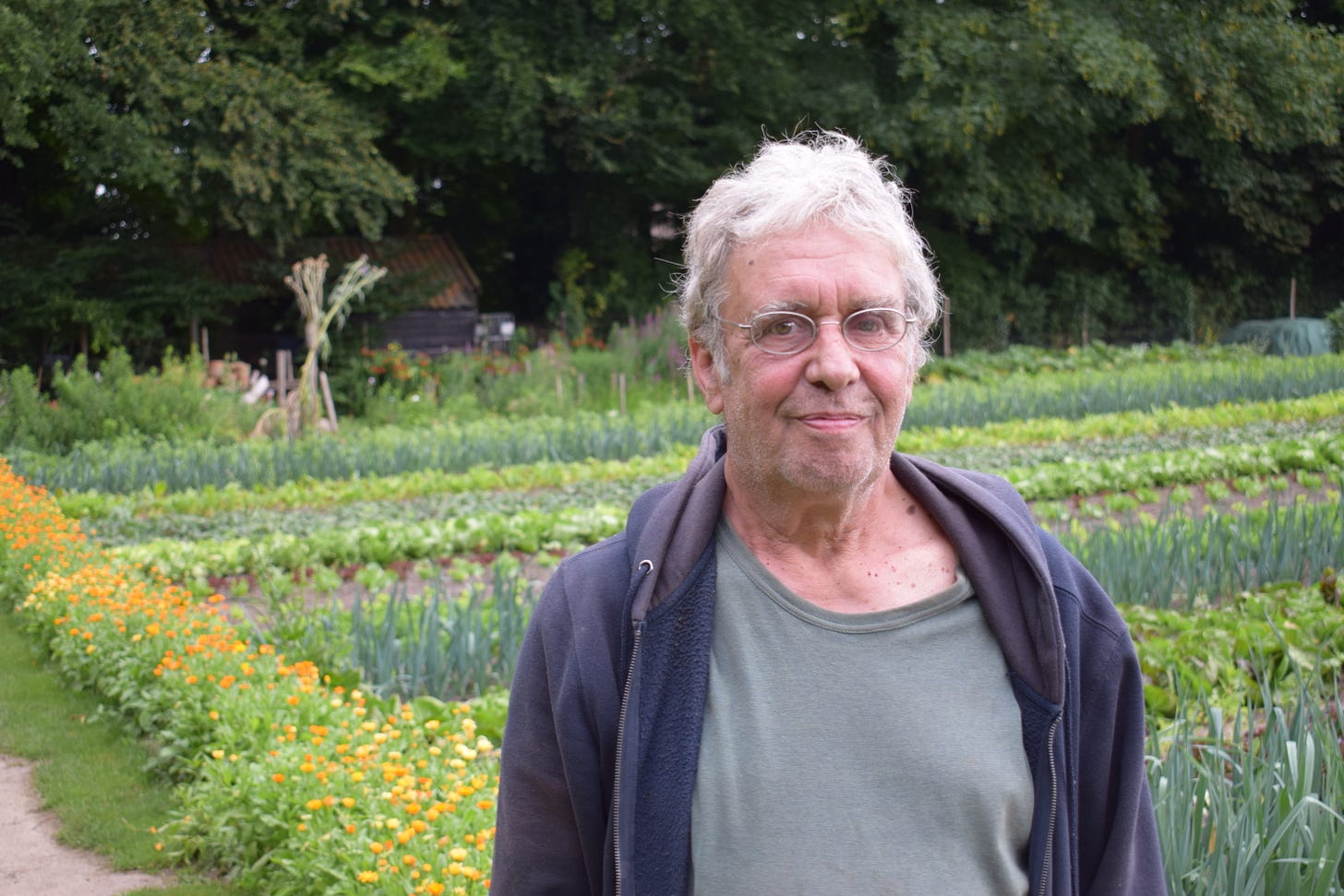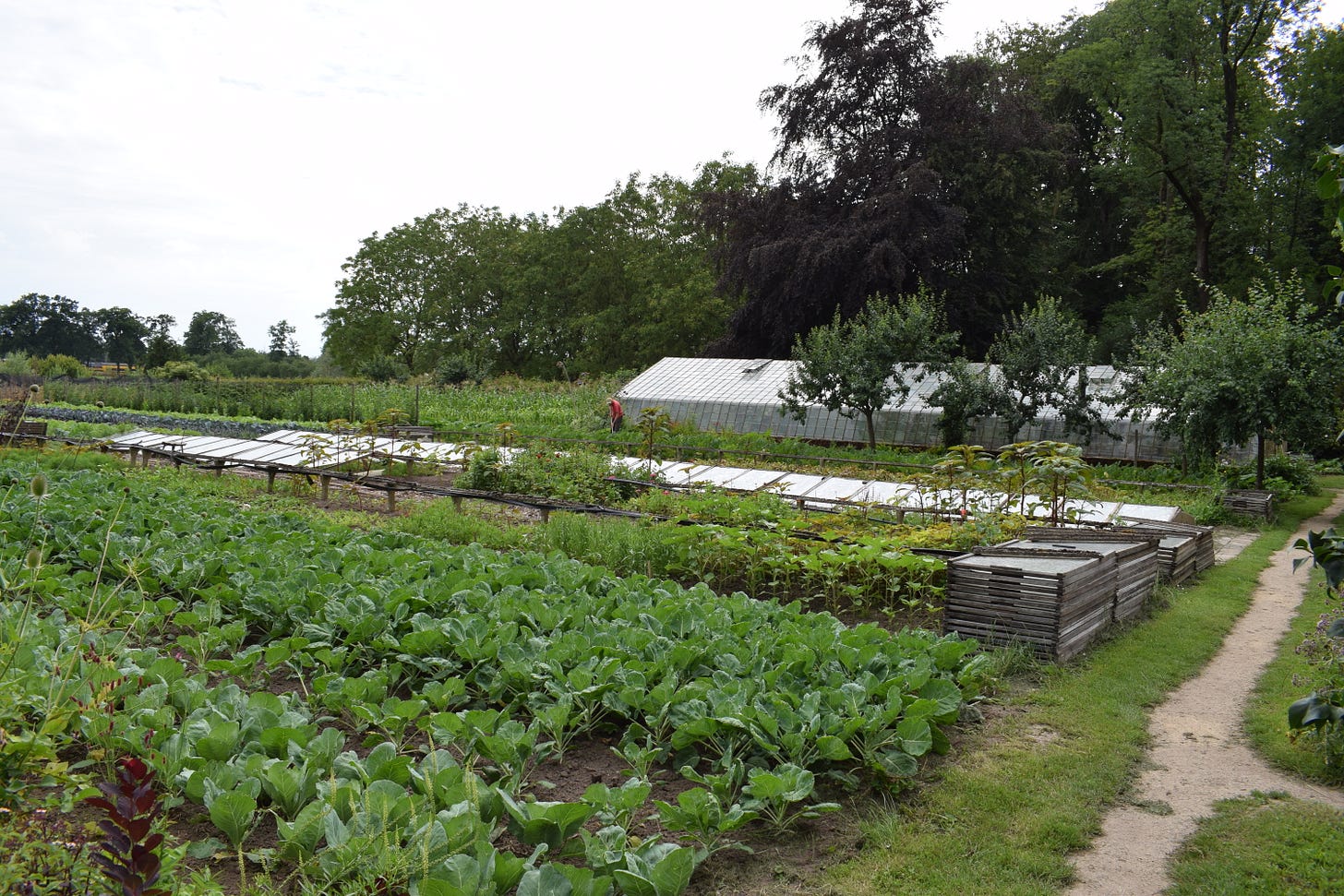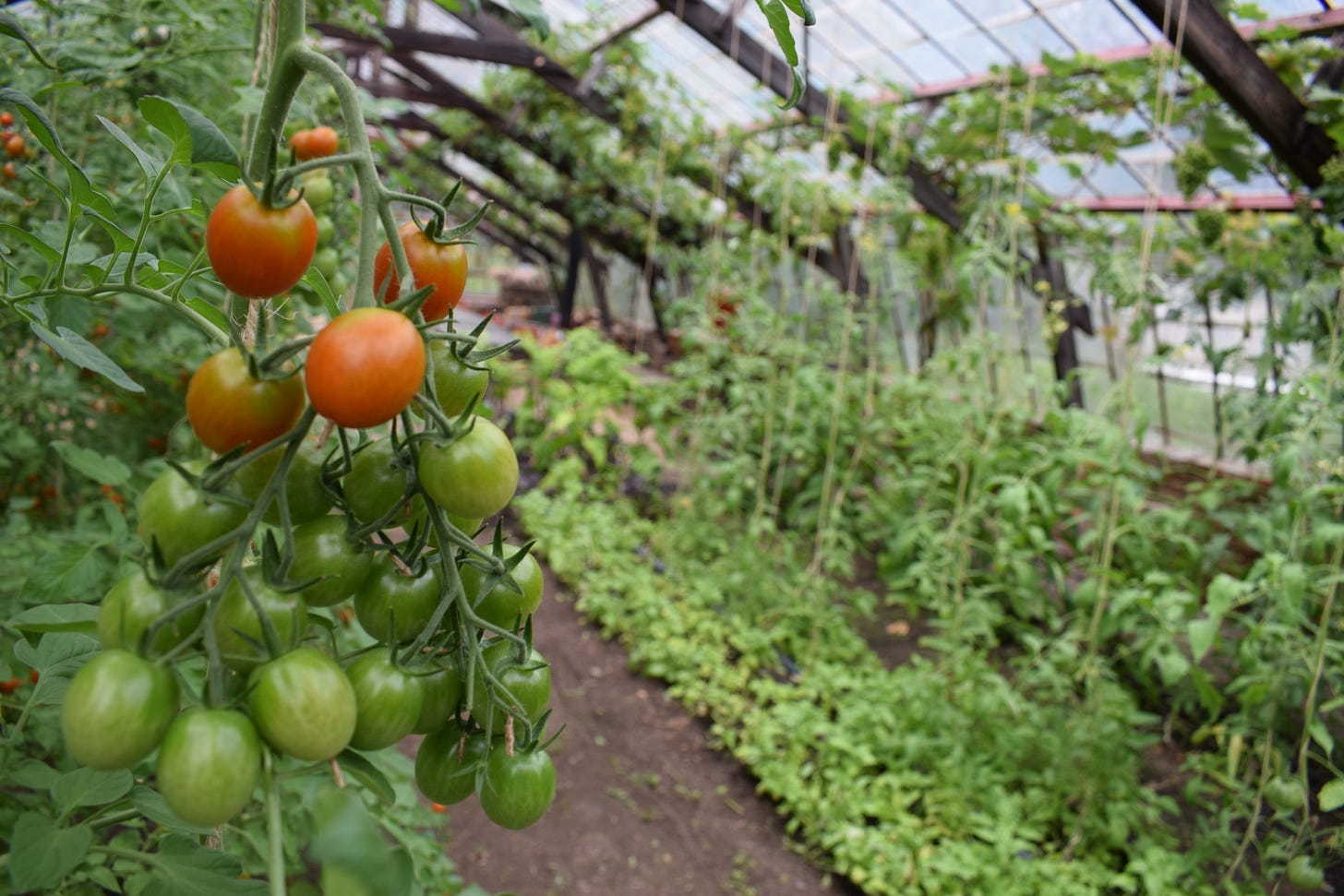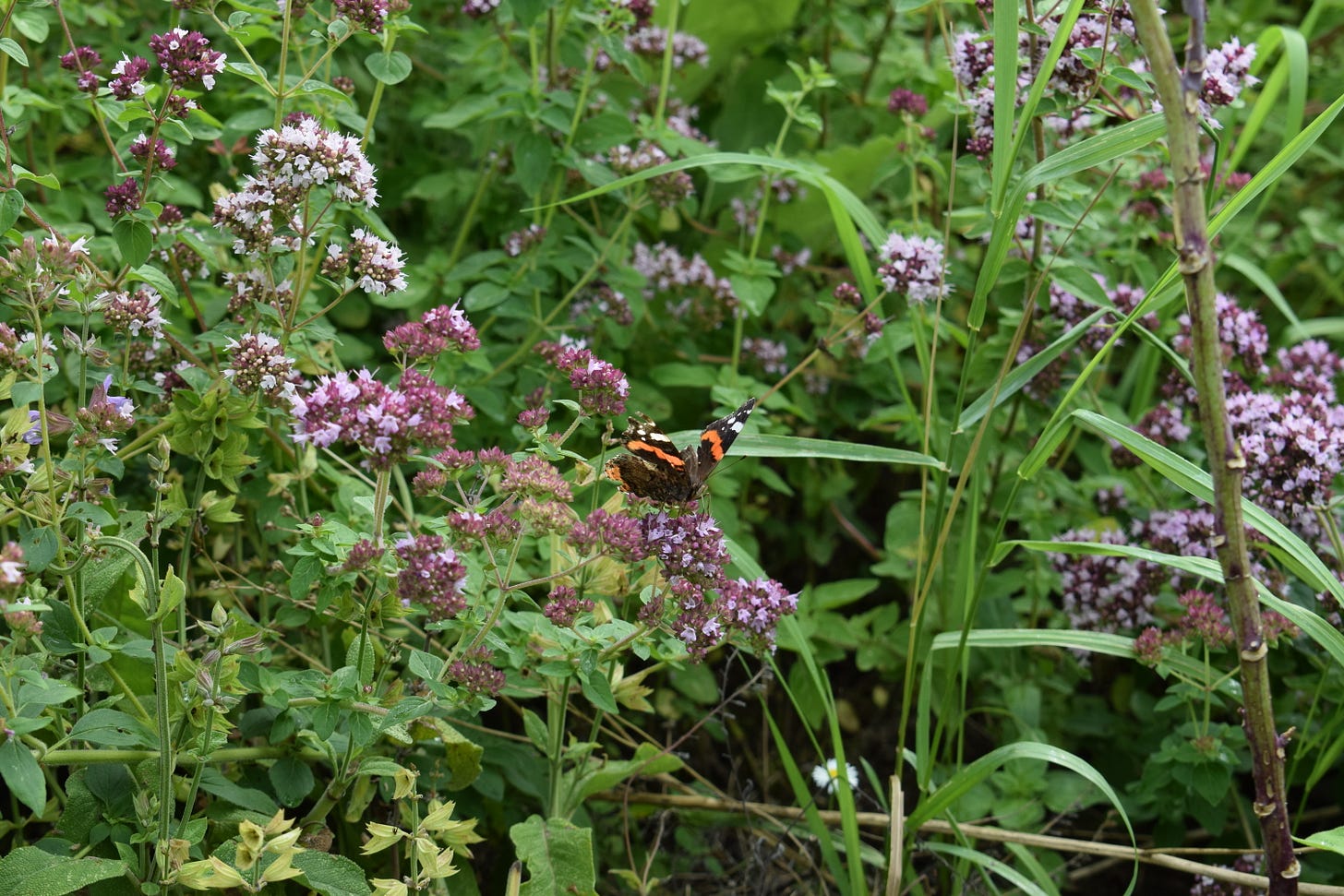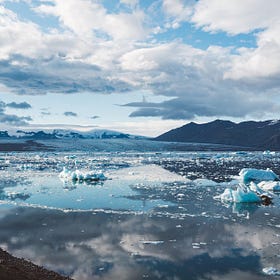Futureproof? This Organic Farmer Says Growing Food With Empathy Is Important
One often neglected aspect of mental and physical well-being is food. The more we research the link between food, healthy intestines, and brain health, the more we see how interconnected it all is. When you eat junk food, your mood goes down and even your memory is affected. Stress affects how your body is able to process food. Healthy food contributes to less inflammation in your body and promotes mental health and longevity. The list goes on and on, and even though it affects each and every one of us, we know nowhere near enough about many of the complex processes going on in our bodies. I wanted to learn more about alternative ways of producing our food, so I visited a biodynamic farm in the Dutch nature reserve Amelisweerd, and asked its owner Michel Smits many questions about his approach to farming.
The complete version of my interview with farm owner Michel Smits is only accessible to paid subscribers. However, because I believe that quality reporting should be accessible to everyone, I do not want to put it all behind a paywall. That is why I’ve also created a public version of the post, which still contains all the important parts of the interview. The content I offer paid subscribers is extra, providing more depth as well as some other related topics Michel and I discussed. A paid subscription helps me to keep doing this work and bring you and all other subscribers the vital insights that I believe we need to make this world a more just and equitable place.
Want an easy way to spread the word about this article? Share this short video online, it’s something new I’m trying out for my longer posts. Also be sure to follow this newsletter on YouTube, Instagram, Facebook, or X if you use those platforms, so you don’t miss out on new posts. Easily shareable YouTube link to the video: https://www.youtube.com/shorts/VZBjpZZWYec
Biodynamic Versus Conventional Farming
After letting me explore the land of the picturesque Amelis' Hof on my own while farm owner Michel Smits and several others were finishing up their work for the day, the two of us sat down at a picnic table that was hidden away in a corner of the farm. I first asked him to explain the main differences between biodynamic farming, compared to both regular and organic farming.
Michel: “We started on this land in 1985 and have been biodynamic all those years. The main difference with regular farming is that that is very chemically oriented. You’re only talking about substances, about artificial fertiliser, nitrogen, phosphor, potassium. Those are the main elements but there are also a lot of other ones. You want plants to be able to absorb those elements. That’s really a very limited approach, it’s very artificial. Eventually you’re going to get a lot of side-effects from that, like the plants getting all sorts of diseases that you then have to start fighting with pesticides. It basically goes hand in hand, fertiliser and pesticide use.
Not that organic farming necessarily means that you don’t use chemicals. Instead of artificial fertiliser, you might use cow manure, for instance. It’s still very different from conventional farming, since you’re not using pesticides anymore, but you’re still approaching it with this chemical mindset. Biodynamic farming, on the other hand, that is a different world entirely. Then you’re talking about living things, biological processes, life processes, and it starts getting a whole lot more complex. I don’t completely understand how that all works. No one does, really.”
Robert: “Basically what you’re saying is that with both regular and often also with organic farming what you’re doing is looking at farming only on this surface level, at how much of these plants you need and how much you need to put into it to get that amount, but you’re not really looking at what these plants need as living organisms. It is kind of the difference between extraction, taking what you want, versus a more collaborative and cyclical way of approaching nature.”
Michel: “We humans are usually very materialistic in our approach to farming. We mainly look at output and not much else. As soon as you start treating these plants as life, then you also don’t want them to get fast food in the form of artificial fertiliser. When we started out here, we had this soil that for decades had been farmed with artificial fertiliser. It was still a beautiful soil and contained very fertile river clay, but it didn’t have any life left in it. Over the years I have seen it transform. I have seen how a soil is affected by these different farming methods. In one of those first years, I went to the market and I stood next to this other farmer who had these leeks as wide as my wrist, and organic too. So I asked him how he did that. With organic cow fertiliser granules, he said, because that has a ton of nitrogen. Okay, so next year I decided to try that. Maybe I used too much, but we also got those massive leeks. Yet I did not like that at all. They were all flaccid and frail, nothing like the ones we used to have. Sure, those were no thicker than a finger, but you could just feel how strong they were. Those fertilised leeks also had a lot more rot, so we had to clean the mould off those. But we did have a lot more output. When I saw those leeks, I decided that I did not want to do that, that that was not the way to do it. And what do you know, we’ve now been doing this for 30 years, during which the soil has amassed all this organic material that our plants can absorb, and now I also have thick leeks. Strong thick leeks.”
Resilience and Healing
I also asked Michel about how resilient his farm is against extreme weather. There have been studies that show that organic farming (note: not biodynamic farming specifically) is more resilient in drought conditions because the soil has a much better capacity for holding water. While conventional farms tend to have higher yields, although often at the cost of the long-term health of the ecosystem, biodynamic farms like this one might offer solutions for a future with more unpredictable weather conditions. Interestingly, he also talked about certain business decisions that have made his farm more resilient, which reminded me a lot of how I’m trying to use Substack to fund my work.
Michel: “Because we take such good care of the soil, it contains a lot of organic materials, which helps it absorb and hold a lot more moisture. Instead of fertiliser, we use compost. That leads to stable humus that stays in the ground for much longer. It binds to the clay and chalk in the soil and forms these large molecular structures, which are much more stable than what you get when you add ammonium or nitrates (=fertiliser) and when it rains a lot they don’t flush away or dissolve in the groundwater.
As a company we are also much less vulnerable to extreme weather because we have so many different crops. I think you’d be hard pressed to find a vegetable that we don’t have. Moreover, we try to make sure that most of our crops are available throughout the season. For instance, we have about six, seven species of cabbage, which we newly sow each week. So we have cabbages from May to November. Each year, there are always a few crops that fail, but that’s not such a big deal since I have a hundred others. Part of the reason we farm this way is because we exclusively sell to private individuals. We have about 100 subscribers, who want a bag of fresh fruits and vegetables each week. Therefore it would not make sense for me to have a thousand cabbages in May and nothing after that.”
Robert: “How long did it take you to become financially independent once you started selling to subscribers?”
Michel: “Between three and five years, after that we could actually afford paid employees instead of using only volunteers. It starts with only a few people who walk past the farm on their walk through the forest around it and come take a look inside. Then they see all the fruits and vegetables, and all the flowers, take home some produce, and come back the next week. We don’t take out adverts or anything, people tend to find us through good word of mouth.”
Besides employing several people, the farm also relies on the work of volunteers for its day-to-day work. They also offer work places for people who have quit or taken a break from their job, for instance because of a burnout. As part of a reintegration programme, they come to work on the farm for one or more days a week.
Michel: “They start feeling better, just by walking around here. Then they start working with their hands, doing meticulous work like pulling out weeds, and get so wrapped up in the work that they don’t think about anything else. I have had that myself too. I couldn’t tell you what I thought about while I was working, but somehow in the process all kinds of problems seem to have resolved themselves. It’s a healing process, because you’re no longer stuck in your own head.”
Future of Farming & (Dis)trusting Mainstream Media
This part is especially relevant to some of the other things I and others like
Robert: “Earlier, you mentioned that your farm has about a quarter less yield than a conventional farm. One of the common criticisms of biodynamic farming is that it won’t be able to feed the world. Do you think that is true?”
Michel: “No, I don’t believe that. Those kinds of statements are all based on models, and I have become much more sceptical of those the past few years, I have to admit. During Covid and all those lockdowns, there were these constant model-based predictions, and not a single one turned out to be true. During the Omicron wave they locked everything down again, but afterwards it turned out that they had based their assessments on the Delta variant. Even the best case scenario was ten times as high as what actually happened. I mean, I believe that there are some models that can be useful. But once it becomes the only truth, things can really get out of hand. I can quite easily imagine that Dutch farmers have become a bit sceptical of those nitrogen calculations” [that are being used by the government to mandate size reductions and consider farm closures].
Robert: “How would you prefer to see the media talk about these issues, because first, you said, no one talked about it at all?”
Michel: “Good question, I have been waiting for about 40 years for people to start taking climate change more seriously, but now that I’m seeing some of the ways in which it is talked about… I’m not happy with that either. I feel conflicted about that. Don’t you also have that, that you think that there’s a side to it that the media is inflating and dramatising?”
Robert: “You’re actually describing the exact reason why I do this work, and why I do it independently and not for a major news organisation. It’s the result of a frustration with the ways in which these organisations do their reporting. I would much rather look at these issues with a more neutral lens and actually say it like it is, to speak the whole truth. That is why I’d rather take the difficult route and build up my own thing, so that I am free to express my opinion and keep my integrity. It’s the same thing for my subscribers as it is with yours; they allow you to take an independent path where you are not beholden to large corporations.”
If there is one thing that stuck by me from our hour and a half long conversation, it is how much of nature we still don’t fully understand. We know how to turn certain dials, steer certain processes, but do we really understand the subtle intricacies of the soil and the many life cycles that help a plant to turn from seedling to crop? I feel like every topic Michel and I touched upon during our conversation is part of the same story. From the importance of people eating proper, healthy food, to taking care of nature and of yourself, they’re all different aspects of a different way of living. To get there, it seems increasingly clear that we must move away from centralised, large-scale, corporate and governmental control of our food systems, of our media, and of our lives. What my visit to Amelis' Hof and my conversation with Michel has highlighted to me is the importance of working together with our fellow human beings and of creating more resilient systems that are decentralised, more diverse, and that work with nature instead of against it. As we move into a more uncertain and unpredictable future, I can only hope that we learn to be humble in the face of the many things we do not know.
Edited by Jayson Koch.
Related posts that might interest you:
Droughts - Adapt or Dry
In this first part of a three-part article series I focus on the causes of the current ongoing drought in the Netherlands and much of Europe. In the other two articles I shall focus on the consequences of droughts and on what is being (and what can be) done about them.
Replace all meat with plants. Problem solved. Right?
Replacing the animal products in your diet with more plant-based alternatives is often touted as a way to reduce your impact on the environment and improve your health. But how sustainable are these alternatives really, and how much impact does a change in diet really have? In this article, we will compare the greenhouse gas (GHG) emissions of several different types of food, and consider how much our food decisions affect our environment.
Massive Flooding in Western Europe Might Very Well Be a Sign of Things to Come
Currently there are massive floods in parts of Netherlands, Germany, and Belgium. The past few days have seen outpourings of rain that are bigger than what normally falls in the entire month of July. We are talking 150-200 Litres per square metre in some cases. The village where I grew up made the national news as a huge river of water
Climate Change - Topics Explained
What is climate change? Rising global temperatures (global warming) affect the Earth’s climate systems, by worsening and increasing the frequency of extreme weather events like droughts, floodings, and hurricanes, causing sea levels to rise, altering its seasons (drier and longer summers, warmer and shorter winters), ice caps and glaciers to melt, and ultimately species to go extinct and ecosystems we depend on to collapse. All these changes caused by global warming put together are often simply referred to as ‘climate change’.



